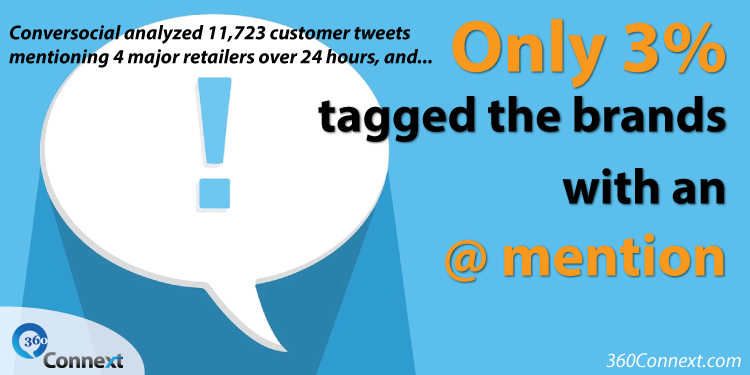Customers are tracking brands and how they interact with customers.
They’re sharing information like who to contact to get things done, and when’s the best time to call and actually get an answer. They may not contact you directly about it, but customers are also talking about their time spent on hold, how many clicks it takes to get things done on your website, how clumsy and awkward the mobile experience is, and more.

The well-worn business adage of “what gets measured gets done” is true on both sides of the experience equation.
So what does this mean for your customer-facing staff?
These expectations may be based on what they’ve heard from friends, what Facebook reports as “very responsive” or not, or what tweets have shown about people waiting for replies.
It’s critical to understand where customers are receiving this information then use it to help you pre. Exceeding those expectations could be a great way to improve loyalty, but “living up” to low expectations will drive a wedge in the customer relationship.
This is the sad state of customer support. Often, customers end up venting on the social platforms after feeling unheard through traditional channels. Customers pay attention to these channels because it provides insight into how responsive a company is.
As a prospect, I might check out the Twitter feed of an organization to see if there are unanswered complaints and how often they happen. If I’m deciding between two brands, the brand with a better approach to customers on social media may win my business.
Customers notice, too. They want to know why everyone is complaining, and they want to see how those complainers are treated.
One rude person can be forgiven as a “bad apple.” Two might be a fluke. But if every interaction with your organization requires interacting with a rude or apathetic person, that’s a pattern.
Customers track (consciously or subconsciously) what the tone of your representatives is. After a pattern is established, the customer might “gear up” to call customer service. Now, because of the patterns this customer has tracked, she might be ready to rumble before picking up the phone.
Your customers are tracking. They are tracking you, your competitors, and the startup they’ve considered leaving you for.
This post was written for, and a version originally appeared in the Intradiem Real-time Frontline blog
 Jeannie is an award-winning customer experience expert, international keynote speaker, and sought-after business coach who is trailblazing the movement from “Reactive Customer Service” to “Proactive Customer and Employee Experience.” More than 500,000 people have learned from her CX courses on LinkedIn Learning, and her insights have been featured in Forbes, The Chicago Tribune, The Wall Street Journal and NPR.
Get Jeannie’s insights in your inbox each week by subscribing to The Weekly Win and follow her on LinkedIn, Instagram and YouTube.
Jeannie is an award-winning customer experience expert, international keynote speaker, and sought-after business coach who is trailblazing the movement from “Reactive Customer Service” to “Proactive Customer and Employee Experience.” More than 500,000 people have learned from her CX courses on LinkedIn Learning, and her insights have been featured in Forbes, The Chicago Tribune, The Wall Street Journal and NPR.
Get Jeannie’s insights in your inbox each week by subscribing to The Weekly Win and follow her on LinkedIn, Instagram and YouTube.